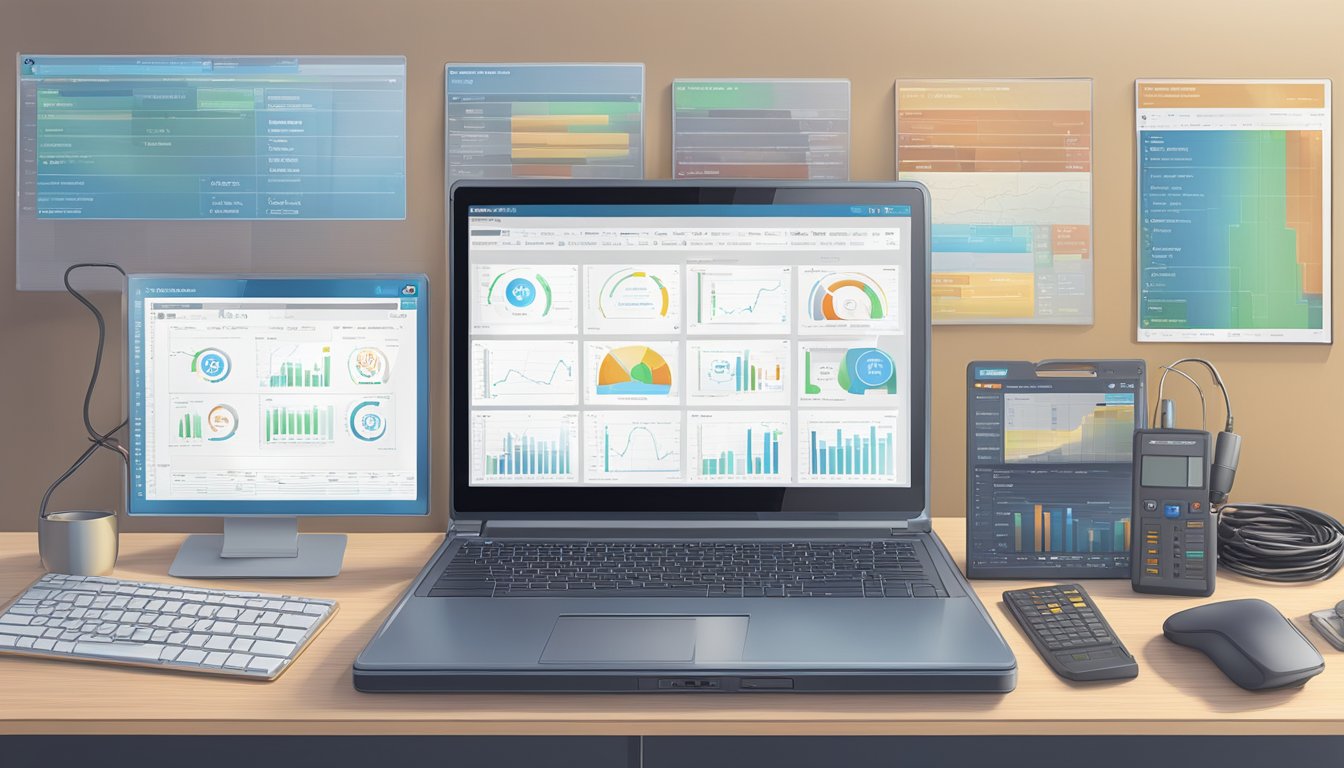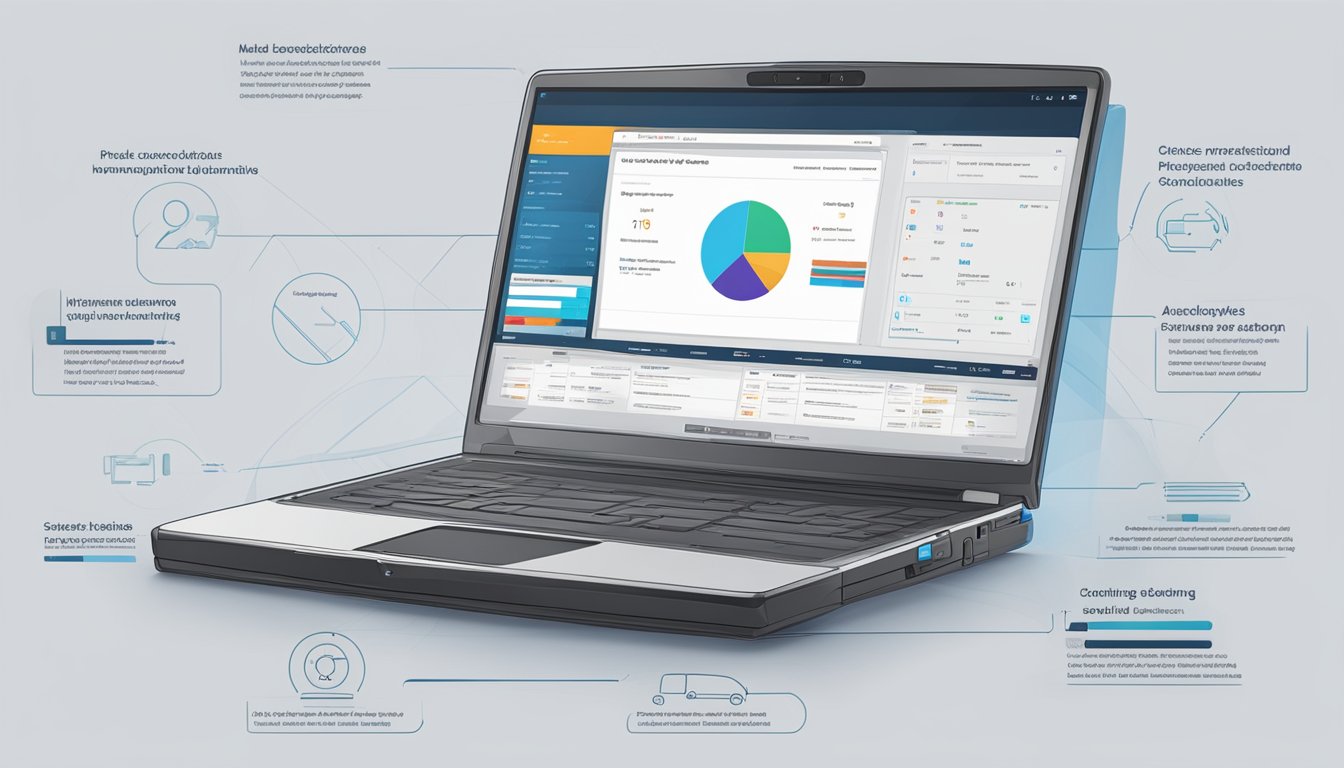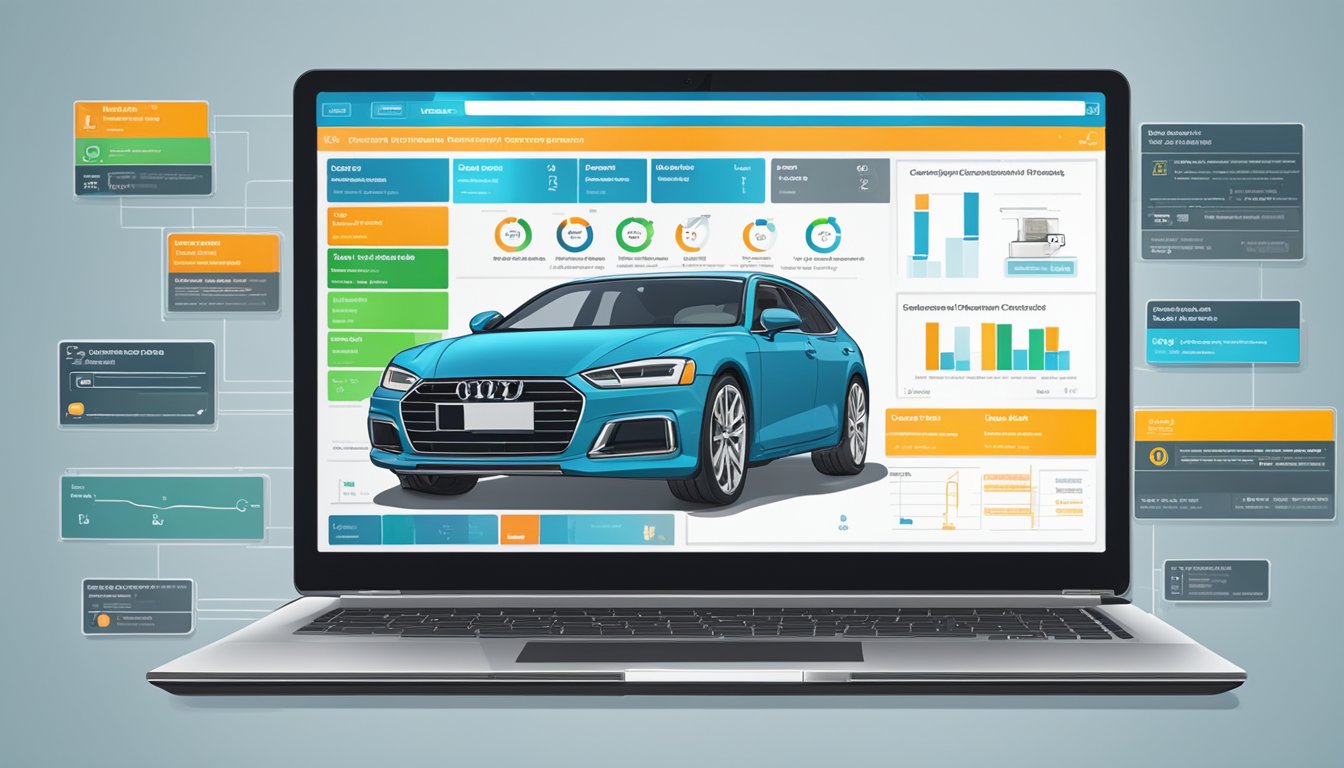These days, working on cars has become way more complex than just popping the hood and getting to work. Modern vehicles are packed with computers that monitor every little thing going on under the skin. From the engine to the transmission to the brake system – if it’s mechanical or electrical, there’s probably a computer module keeping tabs on it.
This means diagnosing problems isn’t as simple as glancing at error codes any more. Technicians need powerful tools to examine computer systems closely. One of the best ways to do this is with professional automotive diagnostic software run on a laptop.
Unlike a basic code reader, diagnostic software gives mechanics complete access to what’s happening inside a vehicle. You can see live data streams, perform tests, and retrieve factory service manuals – all right from your laptop screen. It basically transforms your workbench into a mobile diagnostic command centre.
Some clear advantages of using a laptop instead of a handheld tool are the big bright display, comfortable keyboard for data entry, and ability to multitask. You can research multiple vehicles or check repair tips without changing tools. The laptop can connect to extra devices like emissions analyzers through various adapters.
Then, there’s the convenience of integrating the laptop with estimating and management programs already used at the shop. Work orders, invoices and parts lookups become a breeze. Software updates are simple, too, compared to multiple handheld devices.
This article’ll discuss top-rated diagnostic software packages, recommended laptop specs, diagnostic device options, and setup tips. We’ll also examine how professionals configure their laptop stations for ultimate productivity and troubleshooting abilities. The goal is to help mechanics diagnose problems quickly so vehicles can return on the road quickly. A solid laptop-based diagnostic workflow is key to achieving that.
Why Use Diagnostic Software on a Laptop?
While handheld diagnostic scanners serve as indispensable tools at the vehicle, networked laptops provide enhanced capabilities right at the workbench:

- Access repair information databases – Service manuals, technical bulletins, diagnostic flow charts and more all in one centralized location
- Research multiple vehicles simultaneously – Look up data on multiple jobs without switching tools between cars
- Convenience of a full keyboard and large screen – Easier data entry and viewing diagnostic graphs/waveforms versus a smaller scanner screen
- Integrate with shop management systems – Pull vehicle/job info directly into estimates, invoices and recordkeeping.
- Connect additional vehicle interfaces as needed – Adaptors for advanced testing like emissions, ABS, airbag modules, etc.
- Streamline software updates – Easily install the latest repair information and diagnostic module coverage.
By using diagnostic tools interfaced with a Windows-based laptop, technicians gain powerful vehicle communication and research capabilities optimized for efficient repairs in any shop setting.
Common Professional Diagnostic Software Options
Here are some top diagnostic software packages technicians rely on connected to laptops in independent repair shops and dealerships:

Mitchell 1 PRODEMAND
One of the most widely used professional diagnostic solutions, ProDemand features:
- Access to OEM repair/service info, wiring diagrams and TSBs
- Real-time vehicle communication and bidirectional controls
- Modules for advanced testing incl. airbag, anti-lock brakes and more
- Integrations for estimating, shop management and customer portals
- Continuous software/repair database updates
Identifix
Identifix diagnostic software provides comprehensive OEM repair information as well as real-world solutions from an extensive community of technicians:
- Direct vehicle communication for codes, data and programming
- Real fix verification from member repairs
- Video tutorials for visual guidance
- Integrations with digital inspection forms and job trackers
ALLDATA Repair
ALLDATA’s comprehensive repair database alongside diagnostic vehicle communication includes:
- Access to OEM service manuals and technical service bulletins
- Ability to look up common fixes and tsb bulletins
- Retrieve live sensor data and perform bidirectional tests
- Integration with ALLDATA shop management suite
Autologic Diagnostics
Popular among European vehicle specialists, Autologic offers modular diagnostic suites with capabilities including:
- Coverage of 200+ vehicle brands from mainstream to luxury
- In-depth repair guides and multimedia resources
- Shop management reporting integrated with estimating
- Modules for additional testing incl. airbag, ABS and transmission
These are just a sample of the robust diagnostic software options independent technicians rely on for efficient diagnosis, repair verification, record keeping and more using their laptop workstations.
Laptop System Requirements
To run professional diagnostic software at optimal performance requires evaluating minimum recommended laptop specs:

Operating System
- Microsoft Windows 10 or Windows 11 (64-bit versions recommended)
Processor
- Intel Core i3/i5/i7 or AMD Ryzen 3/5/7 (Higher GHz the better for vehicle communication)
RAM
- 8GB minimum, 16GB or higher recommended for multitasking
Storage
- 256GB SSD minimum, 500GB+ preferred for software/repair databases
Graphics Card
- Integrated or dedicated GPU capable of HD+ resolution
Ports
- USB 3.0+ ports for connecting diagnostic interfaces and accessories
While older laptops may run basic functions, high-performance diagnostic software benefits greatly from meeting advised processor, memory and storage specifications to maximize efficiency. Consult software manufacturer requirements.
On-Vehicle Diagnostic Interfaces
To establish communication between the laptop-based diagnostic software and vehicles requires an on-board diagnostic (OBD-II) interface tailored for each repair bay:
Bluetooth OBD-II Adapters
Low-cost Bluetooth adapters connect wirelessly to most 1996+ vehicles for generic code reading and basic parameter IDs. However, they have limitations on live data and bidirectional controls.
USB OBD-II Interfaces
Wired USB interfaces offer more robust vehicle communication and support for additional PIDs beyond generic OBD-II. Requirements vary by vehicle and software.
Ethernet Diagnostic Interfaces
Hardwired Ethernet interfaces provide the fastest vehicle response for live data streaming, bidirectional testing, and module updates/reprogramming over a wired network.
Specific Brand Interfaces
Interfaces tailored for diagnosing imports, domestics or luxury vehicles offer deepest module access, coding and programming per manufacturer.
Having the correct interface paired with the laptop allows for communication system-specific diagnostics per repair job. Adapters must support protocols used by each vehicle under test to maximize testing abilities.
Other Recommended Accessories
Additional peripherals further enhance the professional laptop diagnostic workstation:
- Wireless printer – For documentation on invoices, repair orders and more
- Large external monitors – Dual screen setup improves data viewing
- External keyboard/mouse – Ergonomic input devices reduce fatigue
- Adaptors/cables – For additional sensors, test equipment and more
- Uninterruptible power supply – Ensures continuous operation during power glitches
- Protective laptop case/sleeve – Safeguards expensive equipment in shop environments
With the right laptop, diagnostic software, interface hardware and accessories, independent shops gain a robust virtual diagnostic centre optimized for proficiency and productivity.
Configuring the Laptop Station
Setting up the diagnostic laptop properly maximizes usability:
- Organize work area – Clean desk space with peripherals within easy reach
- Adjust monitor positioning – Prevent stress on neck/back from improper angles
- Customize displays – Arrange dual screens for optimized diagnostic views
- Organize toolbars – Place quick-access buttons along screen edges
- Customize keyboard shortcuts – Program hotkeys for frequent functions
- Organize desktop – Keep only essential software icons visible
- Adjust settings – Optimize display brightness, audio levels etc.
- Manage cables/cords – Employ ties and cord clips to reduce clutter
With a well-configured workstation, fewer click-and-scrolls are needed to toggle between common tasks, streamlining the diagnostic process.
Maintaining Optimal Performance
Routine maintenance helps keep the diagnostic laptop operating at peak levels:
- System scans – Run regular anti-virus and malware scans to prevent infections
- OS updates – Install all Windows and software updates promptly after release
- Storage management – Clear temporary files and organize driver regularly
- Cooling systems – Clear dust from fans/vents monthly and avoid direct sunlight
- Battery health – Limit continuous charging to preserve lifespan over time
- Backup data – Routinely backup key files to external drives or cloud storage
- Calibration – Maintain monitor/touchscreen accuracy through manufacturer utilities
- Repairs – Address hardware failures promptly to minimize downtime
With diligent care and maintenance, a diagnostic laptop can provide years of reliable service for efficient shop operations.
Key Features to Consider When Choosing Professional Automotive Diagnostic Software
Vehicle Coverage
When it comes to selecting diagnostic software for your automotive repair business, there are a few major things you’ll want to evaluate. After all, this investment needs to pay off by allowing you to troubleshoot issues rapidly and keep clients’ vehicles back on the road. You don’t want to shell out money for something that can’t even talk to half the cars you work on. Check that the software supports domestic and import brands alike, as well as a good range of model years. Having access to your shop’s top 50 problem vehicles is ideal.
Ease of Use
Ease of use is a big deal too – No one wants to fumble around lost in convoluted menus when there’s a diagnostic to run. Go for intuitive, logical layouts so you can zoom in on key information fast. Clear labels and visual organization help speed up the process.
Diagnostic Functions
Naturally, Diagnostic Functions are crucial. Make sure it can retrieve and erase fault codes, as well as access live sensor readings, test components, and calibrate modules. Advanced options like bidirectional controls and programming come in handy too for complex issues.
Updates and Support
You also need Updates and Support long-term. Automotive tech evolves quickly so the software needs to keep pace. Proper update schedules and helpful customer service mean staying on top of the latest repairs. Access to knowledgeable reps helps when troubleshooting tough problems.
Taking the time upfront to consider features critical to your daily workflow pays off with a solution that integrates seamlessly into efficient diagnostic practices. That translates to satisfied customers and more jobs done right the first time through the door.
Conclusion
As vehicle systems continue advancing rapidly, professional diagnostic software on a powerful laptop station has become indispensable for today’s independent technicians striving for accuracy, productivity and profitability. By utilizing best-in-class diagnostic programs, communicating through manufacturer-recommended interfaces, optimally configuring the work environment, and providing routine care – shops transform their laptop workbenches into virtual diagnostic command centers. This streamlines the diagnostic process from initial code retrieval to completed repairs and documentation, maximizing shop efficiency and customer satisfaction. For any independent technician, making the right investments in a laptop-based professional diagnostic workstation pays long-term dividends.








